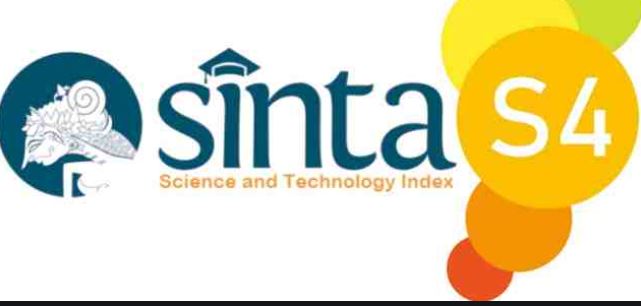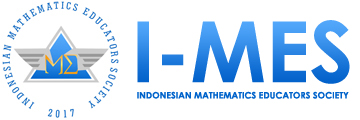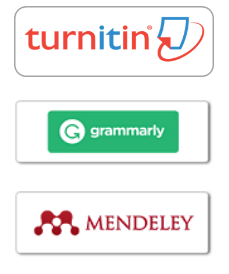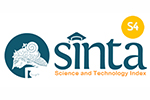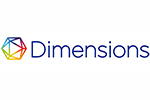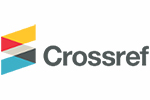THE USE OF BAR MODELS IN JUNIOR HIGH SCHOOL MATHEMATICS LEARNING: A LITERATURE REVIEW
DOI:
https://doi.org/10.36706/jls.v7i1.126Keywords:
bar model; mathematics learning; social arithmetic; problem solving; junior high schoolAbstract
Mathematical problem solving ability is an important skill that needs to be developed in mathematics education, especially at the junior high school level. Based on PISA results, Indonesian students show low performance in contextual problem solving, which indicates the need for more effective approaches in mathematics learning. One approach that has been proven effective is the use of Bar Model, which can help students visualize and understand mathematical problems better. This study aims to explore the use of Bar Model in mathematics learning at junior high school level, especially for Social Arithmetic materials. The method used is Systematic Literature Review (SLR), by analyzing 14 articles published between 2017 and 2024. The analysis showed that the Bar Model can improve students' problem-solving skills, especially in social arithmetic. Nevertheless, the implementation of the Bar Model still faces challenges, such as the lack of teacher training and students' adaptation to visual techniques. This research contributes to the development of more effective mathematics learning methods using the Bar Model
Downloads
References
Abdul Gani, M., Tengah, K. A., & Said, H. (2019). Bar Model as Intervention in Solving Word Problem Involving Percentage. International Journal on Emerging Mathematics Education, 3(1), 69. https://doi.org/10.12928/ijeme.v3i1.11093.
Baysal, E., & Sevinc, S. (2022). The role of the Singapore bar model in reducing students’ errors on algebra word problems. International Journal of Mathematical Education in Science and Technology, 53(2), 289–310. https://doi.org/10.1080/0020739X.2021.1944683.
Boca, A. B. (2023). Enhancing Math Problem-Solving Skills in Secondary 1 (Grade 7) Students through the Integration of KWDL Technique and BAR Model in Learning Activities. Recent Educational Research, 1(2), 148–165. https://doi.org/10.59762/rer904105361220231220143805.
Halki, S. (2020). The Effectiveness of Computer Assisted Mathematics Bar Model for Secondary School Students. 8(7), 4512–4514. https://ijcrt.org/papers/IJCRT2007481
Jahudin, J., & Siew, N. M. (2024). the Effects of Polya’S Problem Solving With Digital Bar Model on the Algebraic Thinking Skills of Seventh Graders. Problems of Education in the 21st Century, 82(3), 390–409. https://doi.org/10.33225/pec/24.82.390.
Jerychum, K., Jaisabuy, K., & Bangtho, K. (2023). The Effects of Learning Management Using the Bar Model on the Ability to Solve Mathematical Problems in the First Secondary School Students. Journal of MCU Peace Studies, 11(6), 2413–2425. https://so03.tci-thaijo.org/index.php/journal-peace/article/view/264129
Cankaya Kurnaz, S. (2025). Lessons to be learned from Estonia’s digital transformation in the context of comparative public administration. Journal of Society, Economics and Management, 6 (1), 63-84. https://doi.org/10.58702/teyd.1593688
Kemendikbud. (2019). Ringkasan Eksekutif Hasil PISA 2018. Pusat Penilaian Pendidikan, Badan Penelitian dan Pengembangan, Kementerian Pendidikan dan Kebudayaan. https://www.kemdikbud.go.id
Lestiana, H. T., & Wanita, C. T. (2019). Bar Model: A Beneficial Tool in Learning Percentage. Eduma : Mathematics Education Learning and Teaching, 8(2), 18. https://doi.org/10.24235/eduma.v8i2.5392
Low, J., Shahrill, M., & Zakir, N. (2020). Solving Fractions by Applying the Bar Model Concept with the Butterfly Method. Mathematics Education Journal, 14(2), 101–116. https://doi.org/10.22342/jpm.14.2.11261.101-116
Madani, N. A., Tengah, K. A., & Prahmana, R. C. I. (2018). Using bar model to solve word problems on profit, loss and discount. Journal of Physics: Conference Series, 1097(1). https://doi.org/10.1088/1742-6596/1097/1/012103.
Matzin, E. S., & Mundia, L. (2020). Efficacy of the Bar Model Method of Teaching Mathematics to Year 7 Students: Case Study of Teachers in Brunei Darussalam. Journal of Educational Issues, 6(1), 402. https://doi.org/10.5296/jei.v6i1.17154.
Mohd Abdul Aziz, A. A., Puteh, M., & Adnan, M. (2023). Development and Validating the Number and Mathematical Operations Problem-Solving Framework in the Form of Higher Order Thinking Skill (HOTS) through Bar Model Strategy - A Fuzzy Delphi Methods. Journal of Science and Mathematics Letters, 11(Special), 1–8. https://doi.org/10.37134/jsml.vol11.sp.1.2023
Ng, S. F., & Lee, K. (2009). The Model Method: Singapore Children’s Tool for Representing and Solving Algebraic Word Problems. Journal of Mathematical Behavior, 28(3), 191–199. https://doi.org/10.1016/j.jmathb.2009.06.001
OECD. (2019). PISA 2018 Results (Volume I): What Students Know and Can Do. OECD Publishing. https://doi.org/10.1787/5f07c754-en
Putri, A., Sumardani, D., Rahayu, W., Hajizah, M. N., & Rahman, A. (2020). Kemampuan Literasi Matematika Menggunakan Bar Model Pada Materi Aljabar. AKSIOMA: Jurnal Program Studi Pendidikan Matematika, 9(2). https://doi.org/10.24127/ajpm.v9i2.2744
Richit, L. A., & Richit, A. (2022). The Singapore Bar Model for solving arithmetical and algebraic problems. Bolema - Mathematics Education Bulletin, 36(73), 697–727. https://doi.org/10.1590/1980-4415v36n73a05
Roos, A.-K., & Kempen, L. (2024). Solving algebraic equations by using the bar model: Theoretical and empirical considerations. Eurasia Journal of Mathematics, Science and Technology Education, 20(9), 1–17. https://doi.org/10.29333/ejmste/15147
Thirunavukkarasu, M., & Senthilnathan, S. (2017). Effectiveness of Bar Model in Teaching Algebra at Secondary Level. International Journal of Teacher Educational Research (IJTER), 6(10), 2319–4642. www.ijter.com.
Downloads
Published
How to Cite
Issue
Section
Citation Check
License
Copyright (c) 2025 Dinda Dewi Nurlatifah, Caswita, Sugeng Sutiarso

This work is licensed under a Creative Commons Attribution-NonCommercial-ShareAlike 4.0 International License.


